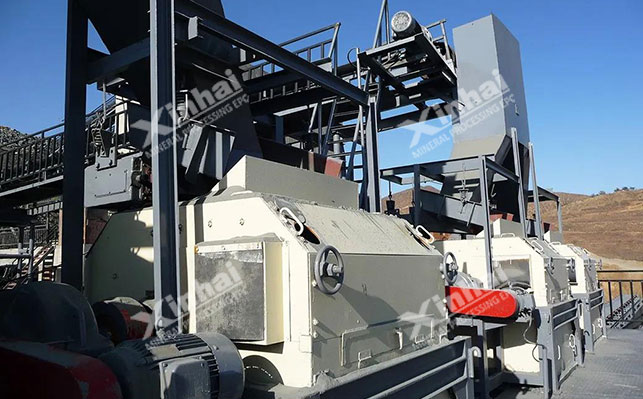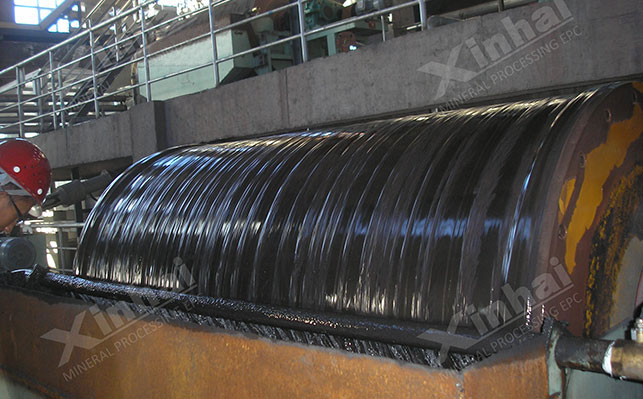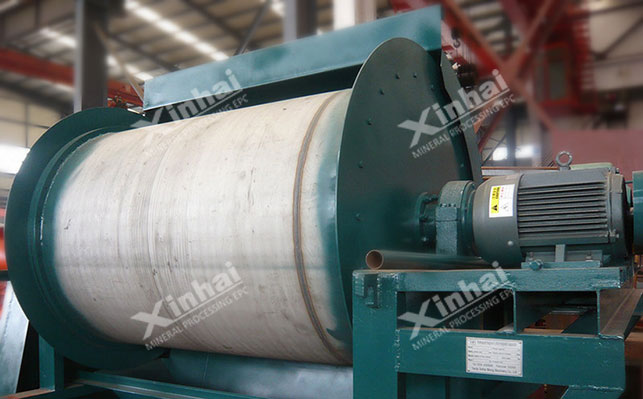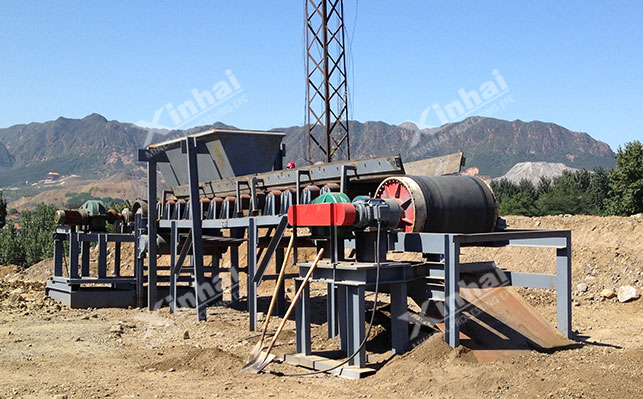
15311826613
Click to add WeChatBauxite is an important raw material resource for the alumina industry. With the over-exploitation of easy-to-select bauxite, it has gradually been exhausted. Currently, most of the bauxite is difficult to select, and most of it is iron-containing bauxite. Its iron-containing minerals exist in the form of hematite, goethite, limonite, etc., and aluminum exists in the form of gibbsite, boehmite and diaspore. Iron removal is required during the beneficiation process to obtain high-bauxite concentrate.
Usually, the commonly used processes for separating iron from bauxite are mainly gravity separation, magnetic separation, flotation, electrostatic separation, flocculation and strong magnetic separation-anion reverse flotation, but this conventional ore dressing method is difficult to obtain a good bauxite concentrate. Aluminum and iron separation needs to be achieved through magnetic roasting, direct reduction, Bayer, acid, reduction sintering or calcium aluminate slag smelting and other methods.

Taking magnetic separation as an example, the prerequisite for using magnetic separation to select aluminum and remove iron is that the aluminum and iron in the original ore should be fully dissociated. For high-iron bauxite with simple mineral particle size distribution, magnetic separation can be directly used for beneficiation and separation, and ideal iron and aluminum concentrates can be obtained.
However, in high-iron bauxite, the iron mineral particle size is relatively fine, and the symbiotic relationship between iron and aluminum minerals is complex, often closely embedded, and the iron and aluminum crystal structures are similar. It is impossible to effectively obtain qualified aluminum concentrate by using a single magnetic separation method, and the component loss is large.

The magnetization roasting method mainly uses reducing gas (or coal) as a reducing agent to reduce the iron in the bauxite to strong magnetite, and then uses magnetic separation to separate the magnet from the bauxite. The process is to crush the raw ore to -5mm, add 25% coke, and perform magnetization roasting at a roasting temperature of 780℃ and a roasting time of 4.5h. After roasting, the minerals are ground and magnetically separated to obtain qualified iron concentrate and bauxite concentrate. However, this method has large losses and low recovery rates during the magnetic separation process.
Direct reduction method for selecting aluminum and removing iron also uses coal or gas as a reducing agent to reduce the iron in the ore into a strong magnet under solid conditions, and then uses magnetic separation to achieve effective separation of iron and bauxite.
However, the iron mineral particles in high-iron bauxite are fine, and the metal magnets generated after direct reduction are difficult to aggregate, so the magnetic separation effect is poor, and it is difficult to obtain a good aluminum-iron separation in the end.

The Bayer process is suitable for processing gibbsite ore with a high aluminum-silicon ratio (A/S>7) by dissolving the ore to extract alumina, and then recovering iron from red mud through ore dressing or acid dissolution. However, this method has high requirements on the quality of the raw ore. In high-iron bauxite, Al2O3 not only exists in the form of gibbsite, but sometimes is mixed with diaspore and boehmite. Bayer process can only dissolve Al2O3 in the form of gibbsite during atmospheric pressure leaching. Therefore, the loss of Al2O3 in the raw ore is relatively large during the leaching process.
The acid-based aluminum selection and iron removal is based on the different ability of iron and aluminum to dissolve in acid under different conditions. The salt crystals of iron and aluminum are separated by the order of evaporation and crystallization of iron and aluminum salt solutions, and then thermally decomposed to obtain aluminum oxide and iron oxide.
Since silicon compounds are mostly insoluble in the acid dissolution process, iron and aluminum react with acid to dissolve in liquid, so the acid method is suitable for treating high-silicon bauxite. However, the acid method causes serious environmental pollution, the acid liquid is difficult to recycle, and the equipment requirements are high.
The reduction sintering method is to use the traditional sintering method to produce alumina, and then add sodium carbonate, calcium carbonate and coal powder to the high-iron and high-silicon bauxite for sintering, so that the bauxite reacts with sodium carbonate to form solid sodium aluminate, and the silicon mineral reacts with the high-temperature decomposed calcium oxide to form calcium silicate, while the iron mineral is reduced to magnetite or metallic iron.

The calcium aluminate slag smelting method is to add limestone (or quicklime) and coal to the high-iron bauxite, and then reduce, sinter or smelt in a semi-molten or molten state in a rotary kiln, blast furnace or electric furnace and other high-temperature equipment to reduce the iron minerals to solid metallic iron or molten iron or alloy iron, and slag the aluminum minerals with lime to produce calcium aluminate slag. The final aluminum-iron separation can be achieved by separating the slag iron of molten iron and calcium aluminate slag, or by separating iron particles by magnetic separation.
However, the calcium aluminate slag smelting method requires high smelting temperature, large lime consumption, large slag volume, and low alumina leaching rate.
The above is an introduction to conventional methods and other methods for iron removal from bauxite. In actual beneficiation plants, it is necessary to conduct ore dressing test analysis based on the aluminum and iron components and mineralization conditions in the bauxite, and then design a suitable high-iron bauxite beneficiation and iron removal process plan based on the test results.